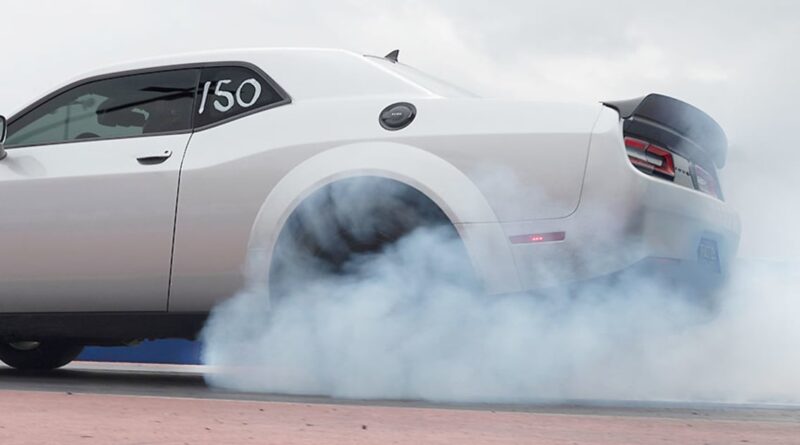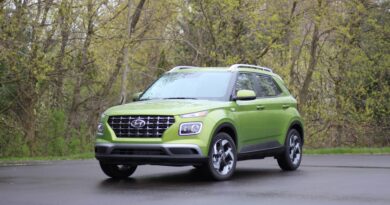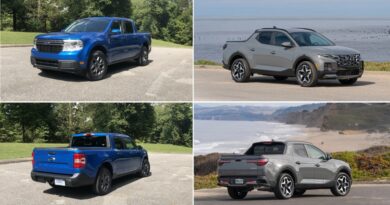Outgoing Dodge models buck Stellantis sales slump
Stellantis’ U.S. sales declined 9.1 percent in the first quarter after sliding 13 percent in 2022, but a deeper look shows its outgoing generation of Dodge muscle cars are still revving as they take one last lap in 2023 before production concludes at the end of the year.
The Charger and Challenger speedsters, which ushered in the Hellcat era of wild performance straight from the factory, are making noise in their final months.
The Charger has had sales gains for the past four quarters, while the Challenger just posted its third consecutive positive quarter.
Dodge CEO Tim Kuniskis attributes the rise to an easing of the microchip shortage as well as the sense of urgency the brand has created with its “Last Call” run of seven special editions that includes the 1,025-hp Challenger SRT Demon 170 launched in March.
Kuniskis said Dodge doesn’t sell cars that people need. Consumers, he said, buy its products because they want them.
On the surface, that sounds like an advantageous situation, but Kuniskis said this comes with a big challenge.
When people consider aspirational products they don’t truly need, their purchase timeline could extend for years. In the past, he said, customers might have said they’ll buy a Scat Pack “someday.”
Dodge sped up that process by emphasizing that these vehicles are on the way out.
“The Last Call did create a timeline,” Kuniskis told Automotive News. “Because all those people are thinking I’m going to get a muscle car someday — someday I’m going to get it. I’m going to get a Scat Pack, I want a Challenger someday. Someday, someday. Well, guess what? We just told them when ‘someday’ was because we said this is it.”
Dodge’s muscle cars aren’t the only Stellantis models seeing gains. A collection of vehicles either leaving the Stellantis lineup or out of production got a sales bump in the first quarter.
Sales of the Ram ProMaster City, which was slated to be shipped to dealers through the first quarter before being discontinued, more than doubled. The Jeep Cherokee, which was built at a plant the company idled in February, surged 31 percent, which officials attributed to pent-up demand and the launch of the 2023 model.
The Chrysler 300, though selling in small quantities, had a 9 percent jump. The sedan is scheduled to go out of production at the end of 2023.
The ProMaster City, the smaller of Ram’s two vans, is leaving the lineup as the brand prepares to debut the electric ProMaster in the coming months.
“Between the chassis cabs, ProMaster large van [and] the Promaster City, the commercial customer has proven themselves very, very resilient,” Ram CEO Mike Koval Jr. told Automotive News at the New York International Auto Show in April.
“Those products are flying off the shelves. I don’t have any. We’re talking single digits, if you have any at all,” he said. “So that’s been a bright spot in an otherwise kind of a bumpy environment over the last couple of months.”
As with many vehicles in recent years, the chip shortage significantly hampered production of the Charger and Challenger, which are built at Canada’s Brampton Assembly Plant alongside the 300.
Kuniskis said the company has seen the chip issue “relax,” which has helped increase sales, and muscle cars benefited from having older technology.
“Brampton was the beneficiary of some really good fortune because the cars have less of the newer technology, so it has less chips,” Kuniskis said. “We had the good fortune that we were able to get back up to production faster, and — knock on wood — it’s been holding pretty darn good. The guys at Brampton have been doing an amazing job fulfilling our orders. Now when we do that, that allows us to go back and fill some of the channels that we wouldn’t normally fill.”
Dodge’s momentum is getting more fuel with the Demon 170, which made a grand entrance via helicopter at the Las Vegas Motor Speedway. Kuniskis said the brand calculated that the hype it created for the Demon has provided exposure equivalent to spending $141 million on an ad campaign.
The Demon 170 costs $98,261 with shipping, and Dodge said dealer orders at sticker price will receive priority scheduling.
Kuniskis said 60 percent of Demon orders so far have been at sticker.
The plan is to build 3,000 for the U.S. and 300 for Canada, but that will depend on production capacity. If there’s a UAW strike this year, or if chip availability hits another snag, there is no guarantee those who paid above sticker will get one.
“If you paid over sticker, you’re going to get pushed to the end of the line and we may not build that car,” Kuniskis said.
“I hope we do because I want to build every one of them, but that’s the risk people are running.”
Source : Autonews.com




